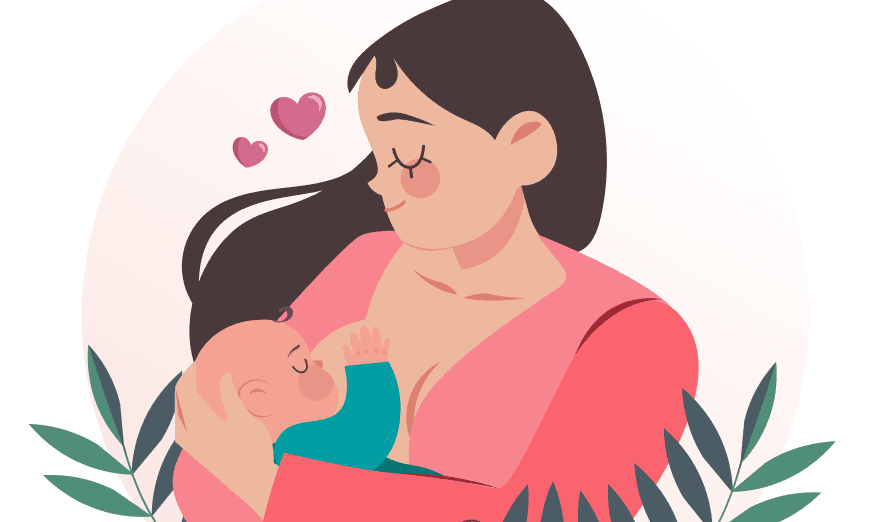Welcome to our latest blog post, where we’ll be discussing one of the most common yet least talked about aspects of new motherhood: postpartum bleeding. While it’s not the most glamorous topic in the world, understanding what’s normal and when to seek help can make all the difference for a new mom navigating this delicate time. So whether you’re a first-time parent or just looking for some guidance on what to expect after delivery, read on for our comprehensive guide to postpartum bleeding 101!
Read more: 5 Common Postpartum Complications Every New Mom Should Know About
Overview of Postpartum Bleeding
For the first few weeks after childbirth, it’s normal for women to experience vaginal bleeding, also called lochia. This bleeding is heavier than a menstrual period and can last up to six weeks. Lochia is made up of blood, mucus, and tissue from the lining of the uterus.
After the delivery of the placenta, the uterine cavity is empty and there is no longer a need for this thickened lining. The process of shedding this unneeded tissue and blood is called involution. Lochia usually starts out heavy and bright red, then gradually becomes lighter in colour and less heavy over time.
It’s important to pay attention to your postpartum bleeding and report any changes or concerns to your healthcare provider. If you have heavy bleeding (soaking more than one sanitary pad per hour), or if your bleeding turns bright red or starts to clot, call your provider right away as these could be signs of complications.

What is Normal?
It’s common for women to experience bleeding and discharge for up to six weeks after giving birth. This is known as postpartum bleeding or lochia. Lochia typically starts heavy and red, similar to a menstrual period, and then gradually decreases in volume and changes from red to pink, brown, and finally yellow.
While lochia usually lasts for four to six weeks post-delivery, some women may experience it for up to eight weeks. If you’re experiencing heavy bleeding (soaking through a maxi pad every hour), severe cramping, or large blood clots, be sure to contact your doctor or midwife right away as this could be a sign of postpartum hemorrhage.
When to Seek Help for Postpartum Bleeding
It’s normal for women to experience some vaginal bleeding after giving birth. This is because the uterus is shedding its lining. The bleeding should gradually lessen over time, and should eventually stop altogether.
However, if you’re experiencing heavy bleeding, or if the bleeding lasts longer than six weeks, it’s important to seek medical help. These could be signs of a more serious problem, such as an infection or a uterine rupture.
If you’re not sure whether your bleeding is normal or not, don’t hesitate to call your doctor or midwife. They can assess the situation and give you peace of mind.
Methods to Reduce Postpartum Bleeding
After giving birth, it’s normal for mothers to bleed. This is called postpartum bleeding or lochia and usually lasts for four to six weeks. Lochia is made up of blood, mucus, and tissue from the lining of the uterus.
While it’s normal to have some postpartum bleeding, there are ways to help reduce the amount of blood loss. Here are some methods that may help:
1. Use pads instead of tampons: Tampons can absorb more blood than pads, which can lead to heavier bleeding. Pads also help you monitor your bleeding more easily so you can tell if it’s getting heavier or if you’re soaking through a pad every hour.
2. Take ibuprofen: Ibuprofen can help reduce inflammation and pain after childbirth. It may also help reduce postpartum bleeding by narrowing your blood vessels and decreasing the amount of blood flow.
3. Use a sitz bath: A sitz bath is a warm water bath that you can do at home to help soothe your perineal area (the area between your vagina and anus). This can help reduce swelling and pain after childbirth, as well as promote healing.
4. Apply pressure: Applying pressure to your vulva (the external female genitalia) after going to the bathroom or having a bowel movement can help slow down the bleeding by putting pressure on the blood vessels in the area.
Read more: Healing after Birth
Alternatives and Treatments for Heavy Postpartum Bleeding
After giving birth, it’s normal for women to have vaginal bleeding. This is called lochia and usually lasts for four to six weeks following delivery. Lochia consists of blood, mucus, and uterine tissue. It may be bright red, pinkish, or brown in colour. Lochia should gradually decrease in volume over time.
However, some women experience heavy postpartum bleeding (PPH). PPH is defined as losing 500 mL or more of blood within 24 hours after giving birth. For comparison, the average amount of blood loss during childbirth is between 250-400 mL. So, PPH is considered to be significantly heavier than normal lochia bleeding.
Heavy bleeding can occur due to a number of factors, including:
-Placental abruption: When the placenta separates from the uterus before delivery
-Uterine rupture: A tear in the uterus
-Retained placenta: When the placenta doesn’t deliver shortly after the baby
-Subinvolution of the uterus: When the uterus doesn’t contract properly after delivery
-Coagulopathy: A disorder that prevents proper clotting
Heavy bleeding can also be caused by less serious conditions such as an incompetent cervix or infection.
Read more: Understanding Postnatal Care: A Guide for New Mothers
Conclusion
Postpartum bleeding is a normal part of the post-birth process, but it’s important to be able to recognize when something is out of the ordinary and seek medical help. Heavy or prolonged postpartum bleeding can indicate underlying issues that need medical attention. With this knowledge in hand, you should feel confident in your ability to monitor your own postpartum recovery and identify any potential problems. If you have any questions or concerns about your postpartum health, don’t hesitate to reach out for professional advice.

















Share this article